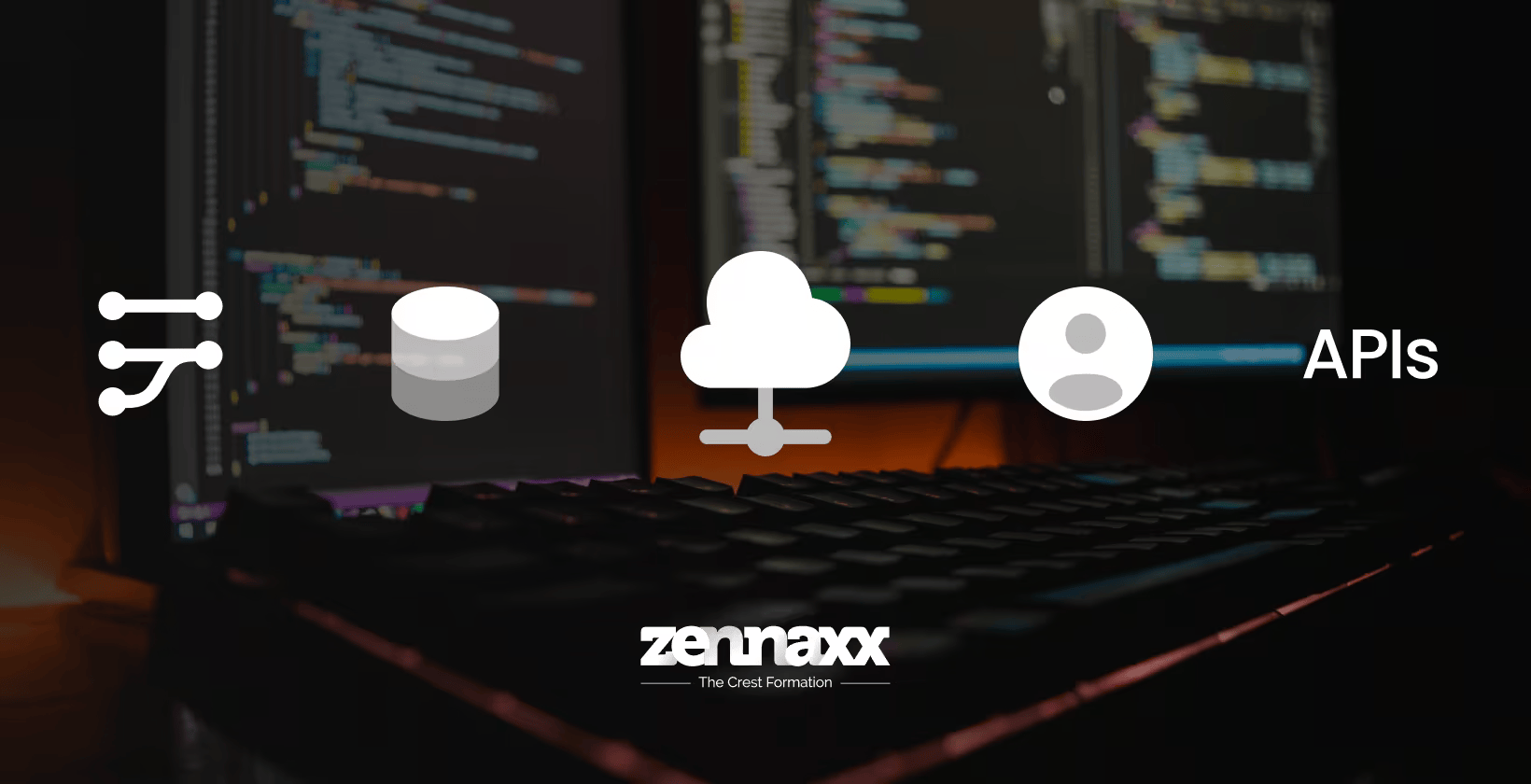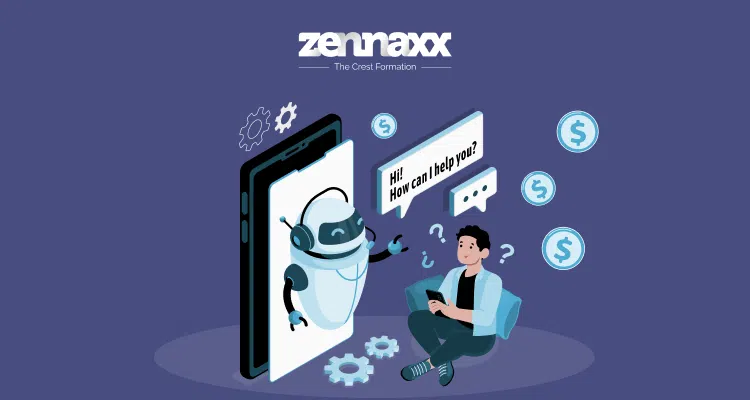Whenever you think of smart cars, Tesla does come to mind, right?
Over the years, these smart cars have not been limited to one automotive company, and many more enterprises are now bringing innovative products to the market.
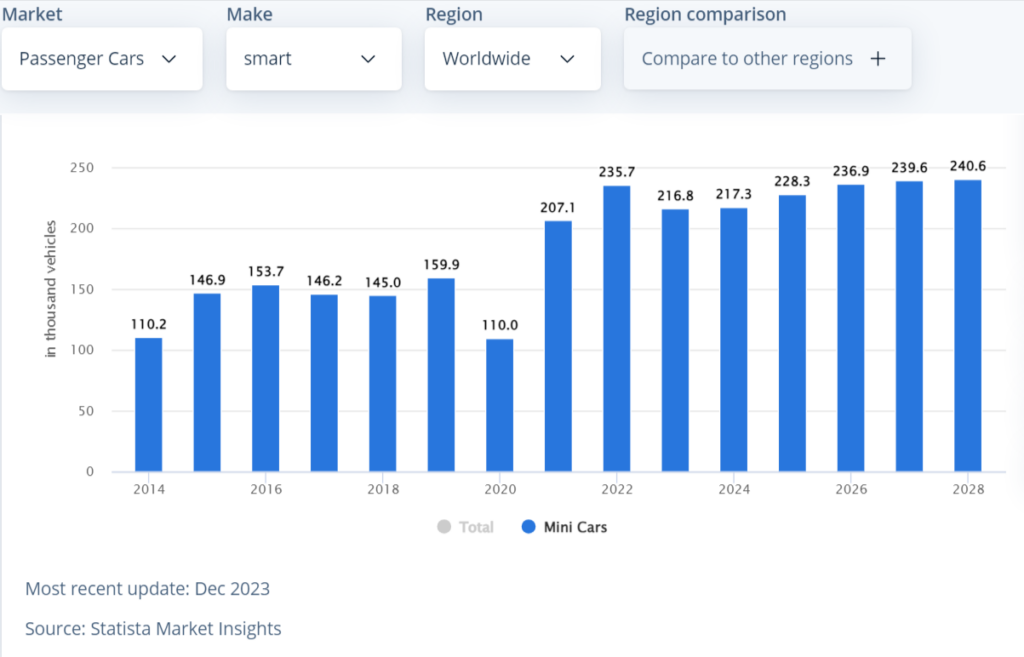
Statista reports that the smart car market is expected to rise to $4 billion by 2028, growing at a CAGR of 2.36%. However, smart cars are not the only innovations; there are connected car technologies and several others that are transforming the automotive industry.
So, what’s the secret sauce to this successful recipe for the automotive industry?
It’s the Internet of Things(IoT)!
IoT in the automotive industry has been pivotal, transforming how driving and riding activities happen for people. It has helped automotive companies improve productivity, production, and profits.
This article focuses on what automotive IoT is and how it impacts modern solutions like smart cars, connected car technologies, and beyond.
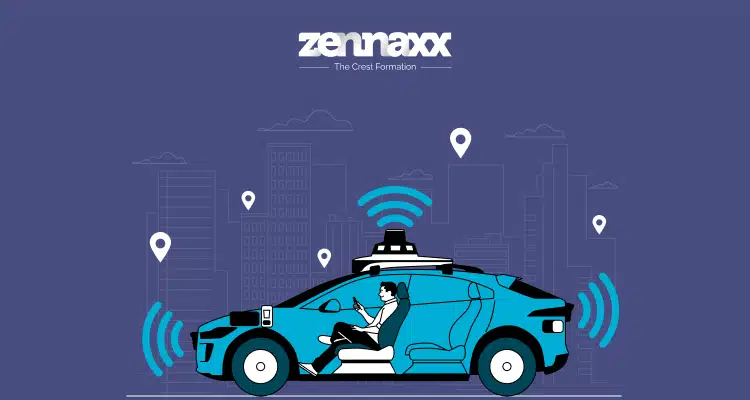
What is automotive IoT?
Automotive IoT is an approach where sensors and devices connected through the internet are integrated into the vehicles.
It allows data collection from vehicles, enables analysis, and offers recommendations for better performance. Using Automotive IoT systems, you can track vehicle maintenance and ensure safety.
Benefits of IoT in the automotive industry
From predictive maintenance to advanced fleet management, there are many benefits to using IoT in the automotive industry. Here are some of the essential benefits:
1. Streamlined manufacturing & floor management
Automotive manufacturing involves multiple functions, such as engine assembly, chassis assembly, and component manufacturing. These functions will need different methods and resources to optimize their outputs.
If this is not done, the outputs may not be as desired. With IoT, you can monitor process efficiency and its results.
For example, Toyota uses IoT-enabled devices for real-time monitoring and data collection in manufacturing plants.
It has implemented the Toyota Operations Availability System (TOAD) and an extensive data control tower system for streamlined operations.
2. Effective fleet management
IoT-based solutions help you enable effective fleet management through real-time data and insights to optimize operations.
Automotive industries leverage connected device systems with sensors and IoT devices to track the movement of their fleets.
These fleets help transport raw materials and end products, so tracking them becomes crucial for automotive companies.
The total volume of the data captured by sensors from large fleets required a more extensive infrastructure. This is where you can leverage cloud capabilities to create a network of devices, storage, and data processing units.
A fleet operator will have software access to understand, analyze, and optimize operations. IoT benefits for fleet management are,
- Real-time location monitoring of the fleet
- Weight tracking of cargo
- Truck performance metrics
- Tracking experience on the road
- Route optimization and management
- Driver management
Using IoT in the automotive industry, you can optimize fleet management and reduce operational costs.
3. Predictive maintenance
IoT-based predictive maintenance offers real-time data from sensors and devices embedded in vehicles.
This allows automotive companies to forecast potential system failures before they occur. It involves sensor integration, data collection, transmission, analysis, and machine learning.
Companies also leverage IoT-based systems for predictive analytics, maintenance scheduling, and execution.
It allows vehicle management by predicting the failures or repairs required for automotive companies. This is crucial for production analysis, product testing, and on-road analysis of vehicles.
Further, automotive companies can leverage three significant strategies for IoT-based maintenance:
1. Run-to-failure
Run-to-failure or RTF involves maintenance activities executed after the occurrence of failure. This is why it is also known as reactive maintenance.
2. Planned preventive maintenance (PvM)
This time-based or scheduled maintenance involves taking the necessary precautions before equipment failure. Unlike reactive maintenance, it is performed regularly.
3. Predictive maintenance (PdM)
Predictive maintenance employs condition-monitoring technology to measure equipment performance. IoT systems connect electronic devices to mechanical and digital machines and collect significant data.
4. Optimal route planning
IoT-enabled vehicles can provide data on traffic, weather, and road conditions. This information allows drivers to plan the most efficient and safest destination routes.
Businesses can leverage automotive IoT solutions to equip their vehicles with optimal route-planning features.
For example, logistics companies can leverage such solutions to enable faster deliveries and reduce operational costs.
Automobile manufacturers can introduce IoT-based route planning features into their vehicles for enhanced driving experience.
Optimal route planning using IoT technology offers several benefits.
- 1. They have reduced travel time and fuel consumption.
- 2. Improved safety
- 3. Enhanced customer satisfaction
- 4. Increased operational efficiency
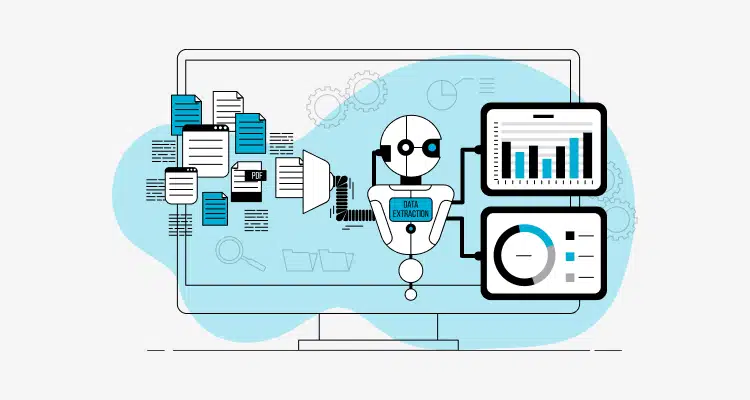
5. Customer-focused manufacturing
Integrating IoT technology in automotive manufacturing has opened up new avenues for manufacturers to understand their customers better.
By leveraging IoT automotive solutions, companies can also implement intelligent manufacturing techniques.
These techniques ensure that data is collected from different sources and analyzed and that specific tasks are automated.
Using IoT-based systems, businesses understand customer behavior and strategize product development accordingly.
For example, a car manufacturing company can use an IoT system to understand driver behavior and gain critical insights into performance.
Based on the data, automotive companies can design products.
Another classic example is Formula One(F1) cars, whose entire design depends on data from sensors attached to the vehicles. F1 racing cars also leverage IoT to help drivers make data-driven decisions.
Here is how F1 racing cars leverage IoT:
- 1. F1 teams can access real-time data from the cars to monitor vehicle performance.
- 2. Data collected during the driving offers drivers information on driving and strategies they can use to maximize performance.
- 3. Some critical data that F1 teams access in real-time are engine temperature, suspension, gear ratios, tire pressure, and air intake pressure.
6. Ability to update software remotely
Modern automotive industries are focusing more on connected car technology. This is in sync with customer demand for cars with higher functionalities.
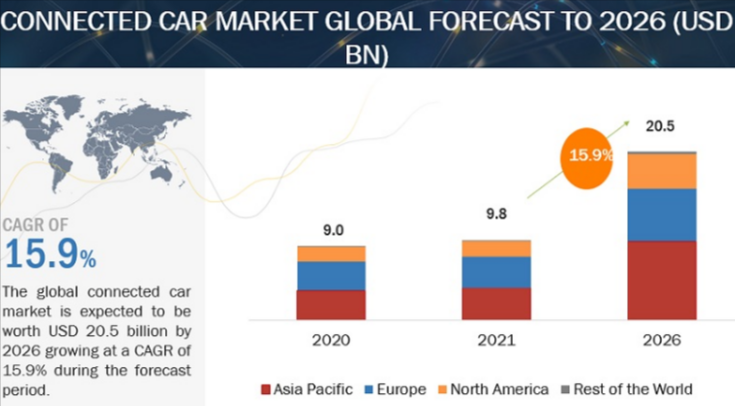
In fact, the connected cars market is growing at a rapid pace of 15.9%, promising customers features like never before. Connected cars use the internet to connect and communicate with vehicles, traffic infrastructure, and apps.
These systems are built into the car and come with specific features to enhance the ride experience for drivers. For example, connected cars help drivers communicate with each other on the app.
A touchscreen display provides the usual music, weather, and navigation controls. These devices have embedded software that is remotely updated using automotive IoT systems.
7. Better driving safety
Using IoT in automotive industries has improved driver safety. It helps track driving behavior and allows drivers to improve their driving skills.
Most importantly, the automotive industry uses IoT technology and vehicle safety technologies, such as ADAS(Advanced driver assistance systems), to power drivers.
ADAS helps vehicles detect collision courses, warn for lane departure, and offer adaptive cruise control and automatic emergency braking.
These systems continuously monitor vehicle surroundings and alarm drivers if any roadblocks or dangers occur.
8. Reduced human errors
IoT automotive solutions allow companies to reduce human errors in manufacturing using continuous data capture.
Take the example of the Driver Drowsiness and Attention Warning(DDAW), which the European Commission made mandatory in 2021.
DDAW systems analyze the driver’s alertness by analyzing steering, and lane keeping and warn a driver if needed. By July 2022, all new vehicles in the EU are shipped with a DDAW pre-built.
It leverages IoT systems of cameras, sensors, and other devices to ensure reduced manual errors while driving.
9. Smarter engineering
IoT automotive solutions have been pivotal in the Industry 4.0 uprising and offer businesses deep insights. IoT can track driving behavior, customer buying patterns, and vehicle performance.
Further, IoT automotive solutions allow buyers to interact with brands through connected car apps. They also provide drivers with personalized services, time maintenance, technical assistance, and other services.
Now that you know the benefits of IoT in the automotive industry, it’s time to understand the challenges you may face implementing it.
Excited about IoT transforming cars?
Share your inquiries, project ideas, or collaboration interests with us. Together, we’ll navigate the road to seamless integration of smart technology into your driving experience!
4 Challenges in IoT Implementation in the Automotive Industry
Automotive IoT adoption is increasing with more innovations, but car manufacturers face several challenges, including security and production delays.
1. Cybersecurity issues
IoT devices help businesses build a connected car network through the Internet. Cars act as remote devices where drivers can access data from the Internet. However, these devices are remote, and they can be prone to cyberattacks.
Maintaining cybersecurity is difficult for companies without implementing specific measures.
For example, car companies can leverage encryption to ensure data protection. Further, you can ensure secure data access through multi-factor authentication.
Especially automotive companies that offer Apple and Google carplay features must leverage multi-factor authentication for better cybersecurity.
2. Long deployment time
While manufacturing new products designed with the integration of IoT may not face such an issue, integrating it into an existing system does require more time.
This can lead to production delays and increase time to market.
The best way to reduce deployment time is to leverage data analysis and carefully plan integrations.
First and foremost, try to design your products with integration considerations. Further, try to minimize integration time through automation.
3. Connection stability and network bottlenecks
Imagine several cars running across different state highways, and you want to maintain effective communication.
The network mesh and infrastructure requirements for such a connected system are massive.
Such a system requires several IoT devices, network infrastructure, and effort. In addition to infrastructure complexities, you have to deal with congestion and massive traffic.
Overcoming such challenges requires a thorough network analysis and assessment of the existing infrastructure.
Further, specific transmitters and receivers across the region are needed for effective network mesh. However, you can partner with local network providers and companies to create a robust setup.
4. Lack of required IoT skills
One significant challenge in implementing automotive IoT solutions is the lack of skills.
Expanding technologies and innovations in the connected cars space need expert professionals.
However, most organizations face challenges in finding the right talent to implement IoT in automotive systems.
While outsourcing does help resolve the challenge of the skill gap, you need to compare all the vendors to analyze the best option.
Choose automotive IoT experts who can deliver tailored solutions for your business. These vendors need to have a proven track record in delivering IoT-based solutions.
Impact of the IoT on connected cars, smart cars, and vehicles
The adoption of IoT in the automotive industry is the core reason behind innovations like connected cars, smart cars, and autonomous vehicles.
Connected cars
The impact of IoT on connected cars is multifaceted. It enhances vehicle capabilities, improves safety, increases efficiency, and delivers a superior user experience.
- IoT sensors can predict potential repairs in vehicles before they become serious issues.
- It enables automatic braking, collision avoidance systems, and lane-keeping assists.
- Connected cars use real-time data through IoT devices to offer dynamic routing and re-routing.
- IoT facilitates mutual communication between cars.
- It also helps monitor and optimize fuel usage.
- Connected cars can receive over-the-air software updates using IoT devices.
Smart cars
IoT enables infotainment systems, real-time navigation, media streaming, and cloud-based services in smart cars.
Smart cars can transmit data for diagnostics and maintenance to automotive companies directly through the internet, leveraging IoT systems.
These cars have advanced safety features like automatic emergency braking and tire pressure monitoring.
IoT devices with embedded software enable smart cars to track the movements of adjacent vehicles with 360-degree cameras, making it safer for drivers.
Autonomous vehicles
Autonomous vehicles are increasingly becoming commonplace. A significant example is Tesla cars in the US, which use IoT sensors to gather data about their surroundings and make real-time decisions.
Such autonomous vehicles use a combination of IoT sensors to collect information from their surroundings constantly.
Further, this data is processed in real-time to make informed decisions. IoT in the automotive industry has also led to innovations like Vehicle-to-Everything(V2X) communications.
What is V2X?
V2X allows cars to communicate with other cars, devices like smartphones carried by pedestrians, road infrastructure, and others.
Though automotive IoT security challenges exist for such devices, with robust infrastructure, businesses can avoid such instances.
Now that you know how IoT has impacted innovations like connected cars and autonomous vehicles, it’s time to understand some critical use cases.
Want to Automate Your Business Process With a Software Solution?
Zennaxx, a leading software development firm in Canada, has delivered 700+ bespoke solutions spanning various industries.
The most common IoT use cases in the automotive industry
Automotive IoT use cases over the years have increased with innovations like smart cars and autonomous vehicles. However, some use cases are constantly growing.
1. Cellular Vehicle-to-Everything (C-V2X)
Cellular V2X is a use case where IoT devices enable communication between vehicles and other objects with connectivity features.
Why is this use case critical?
- It reduces the traffic congestion and maintains the flow.
- Offers better safety with vehicle status, road condition, and speed details.
- Improves data tracking for automotive companies.
- Allows drivers to share critical information on road safety.
2. Smart fleet management
IoT helps with intelligent fleet management in the automotive industry. Companies can leverage IoT in automotive applications to track details of vehicles, such as location, speed, fuel consumption, and others.
IoT allows you to,
- Monitor and optimize routes for drivers.
- Improve driver behavior.
- Predict vehicle component failures.
- Ensure proactive maintenance.
- Data-driven management for fleet managers.
3. In-vehicle infotainment
IoT has changed the driving experience by enabling advanced in-vehicle infotainment systems.
It allows seamless integration of smartphones, tablets, and cloud-based services into cars, allowing passengers to access streaming media, the internet, and real-time information.
Automotive companies also leverage IoT-enabled voice recognition and natural language processing to enable voice-based functions, such as navigation, music playback, and climate control.
It also allows personalized settings and preferences to be automatically applied when the driver or passengers enter the vehicle.
4. Predictive maintenance
With automotive IoT solutions, companies can predict vehicle downtime and design products accordingly.
For example, companies can use IoT sensors to understand the strength of the frame in any car design.
This would help companies make cars last longer. Similarly, using IoT systems, automotive industries can detect issues beforehand and implement preventive measures.
5. Advanced car insurance
Integrating IoT in your automotive manufacturing plans can be beneficial in developing advanced safety features.
For example, ADAS is a feature that leverages IoT for driver and passenger safety, offering advanced vehicle insurance.
Further, using IoT in automotive vehicles can help reduce accidents and insurance claims.
If your use case is defined, the next step will be to develop an automotive IoT app. Well, here are some points you need to consider first!
Key points to consider when developing an automotive IoT app
If you are to develop an IoT-based automotive solution, you need to consider the following points,
1. Market analysis
Conduct market analysis to understand current trends, assess potential risks, identify problems, and evaluate solutions. This allows you to,
- Know the market gap
- The solution needed to fill that gap
- Identify features for the solution
- Plan the entire app project
- Create a roadmap for the IoT automotive app
2. Development team
Accessing a skilled and experienced development team becomes crucial in navigating the complexity of automotive IoT solutions.
Choose an IoT automotive app development company with a proven record of delivering innovative solutions.
The development team must have experience developing built-in systems for vehicles. They must ensure hardware and software connectivity, enabling connections to third-party APIs.
In addition to domain expertise, you also need to gauge how well-versed the team is with the latest tech stack.
3. Tech stack
Choosing the right tech stack is crucial and should be compatible with the specific requirements of automotive software.
Here is a recommended tech stack for an IoT-based automotive app
- Cloud platform- Amazon Web Services (AWS), Google Cloud IoT, or Microsoft Azure IoT
- IoT protocols and communication- Implement communication standards like MQTT or AMQP
- Data analytics- Apache Kafka, Apache Spark, or Hadoop
- Development frameworks- Python, Java, Node.js, and C++
- API management tools- Apigee or MuleSoft
- UI/UX- Adobe XD, Figma, or Sketch
- Databases- MongoDB or CouchDB or SQL databases like PostgreSQL
4. Design requirements
To ensure safety while driving, the car app interface needs to be simple and straightforward. Interactive interface and responsiveness are key here.
If the in-built system has a non-responsive interface, it can lead to the risk of drivers losing concentration while driving.
This is where experienced UX designers can help you with a user-friendly and responsive interface.
5. Security and QA
Implementing IoT in the automotive industry requires effective measures for cybersecurity to ensure data protection.
So, if you are building an app from scratch or trying to create embedded software to integrate into the existing setup, automotive IoT security needs to be planned.
For example, if you are building a connected car technology for your business, you need to have cloud security measures in place.

Our experience in using the Internet of Things for smart vehicles:
An automotive startup approached us with a requirement to develop a smart parking solution.
They wanted to integrate the parking management feature into their connected car app. The entire project was to be set up and developed from scratch.
As an expert IoT app development company, we provided a comprehensive solution for integrating smart parking features into the connected car app.
The first step was to analyze requirements and thoroughly understand user needs.
It helped us formulate the design and architecture of the system with a user-friendly app interface, a robust backend, and secure IoT integration.
In the solution we applied, IoT components use sensors to monitor real-time parking space availability, with data flowing seamlessly between the car, parking infrastructure, and user interface.
The mobile app and web portal provide advanced features like parking space reservation, dynamic pricing, and analytics on usage patterns.
In the end, rigorous testing, compliance checks, and a phased deployment approach allowed us to ensure the solution was reliable and efficient.
Beyond the product’s launch, we are also helping clients with ongoing maintenance, updates, and fine-tuning to optimize the smart parking system over time.
Conclusion
The automotive industry is rapidly transitioning towards innovative automation thanks to IoT and other disruptive technologies.
The evolution of IoT in the automotive industry has led to the emergence of connected and automated cars.
This has completely transformed car maintenance capabilities, in-car infosystems, connectivity, and security.
Vehicle data collection and analysis facilitated through automotive IoT solutions is helping enhance long-range data transmission for an efficient IoT-powered fleet management system.
With the increasing usage of IoT in the automotive industry, there will be more automobile use cases in the future, completely changing how we interact with our vehicles.
Finding the right tech partner becomes crucial for companies trying to leverage this transformative technology. Fortunately, Zennaxx is one partner you can count on! So, get your project estimate now!
Frequently Asked Questions (FAQs)
- How is the automotive industry utilizing IoT technology?
- IoT technology is being used by the automotive industry to enable connected cars, remote diagnostics, predictive maintenance and driver experiences that are enhanced.
- What are the various applications of IoT-connected cars?
- Connected cars deliver real-time traffic info, do remote vehicle troubleshooting, conduct over the air software updates, provide voice-controlled infotainment devices as well as offer advanced driver assistance systems.
- What specific safety features do IoT cars possess?
- In order to improve the safety of both drivers and passengers, IoT-enabled cars incorporate features, including automatic emergency braking, lane departure warning, blind spot monitoring ,and remote vehicle tracking.
- What can we expect from the future of IoT in cars?
- The future of IoT in cars offers autonomous driving, fuel efficiency, smart home and city integration, and personalized in-car experiences.
- What challenges may arise while developing an IoT automotive application?
- Potential challenges include ensuring data privacy and security, managing the vast amounts of data generated, integrating legacy systems, and addressing regulatory requirements.

